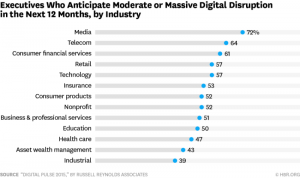If you’ve been scratching your head trying to understand why your website isn’t getting much traffic, keeping visitors’ attention or converting visits to actual sales, we’ve got some tips to help solve this issue.
Here are the eight most common “missing links” in website design, development, and promotion, including tools to help you bridge the gaps and finally see some returns from your online presence.
1. A mobile version
The problem: More people now access the Internet on mobile devices than personal computers, which means you’ll want your customers’ mobile visits to your website to be seamless. Also, Google just expanded its use of mobile-friendliness as a ranking signal, which gives you another reason to make sure your mobile version is up to par.
The solution: To see if your website has a mobile-friendly design, Google offers a free “Mobile-Friendly Test” app. Just type your website in here and the test will analyze your URL. If you’re already using WordPress to power your site, you can also use its pre-built “responsive-design” themes to ensure your website will be reconfigured and resized on any mobile device.
Another option is to develop a dedicated mobile site. DudaMobile creates a mobile version of your website in minutes for free and VerticalResponse fans get discounts on upgrades.
2. A fast load time
The problem: Your website is so slow to load that many potential customers leave before they even get to look around.
The solution: There are lots of free sites that let you test your site’s speed. Webpagetest.org lets you test from multiple locations around the world using real browsers at real consumer connection speeds. If you discover an issue, Google Page Speed Insights can offer you an analysis of what to fix, tell you why it needs to be fixed, and guide you along as you do it.
3. A scheduling tool
The problem: Customers can’t make or change appointments after hours.
The solution: Add a scheduling button from Appointlet, an application that works with Google Calendar, to allow customers to book appointments and pay for services on your website at any time.
4. An email sign-up form
The problem: New visitors are coming to your site, but you’re not collecting their email addresses to engage them with promotions, announcements, or newsletters.
The solution: If you’re a VerticalResponse customer, you can easily embed a sign-up form on your website to collect email addresses and additional details from your customers. Remember that it’s a free service, and there are many professionally designed templates to choose from.
If you’d rather collect email info when a visitor is about to leave your site, Bounce Exchange might be a good option. The site helps you design a pop-up that appears when a visitor hovers over the “back” button, indicating they’re preparing to leave the page.
5. Cookies and website tracking tags
The problem: You have no record of your customers’ visits.
The solution: Adding cookies and tagging is the next best thing to getting inside your customers’ heads. You’ll have a better idea of what pages your customers visited, what they put in their shopping carts before they abandoned them and which ads might be most effective in persuading them to buy. Free tools like Google Tag Manager allow even the less-than-tech-savvy small business owner to add or update website tags.
6. A search box
The problem: Customers get frustrated that they have to scroll through pages of products or information to find what they are looking for.
The solution: Add a search box. DuckDuckGo lets you create and place a search box on your site for free.
7. Social media icons on your website
The problem: You’re having a hard time building your social media following.
The solution: Making time to attract social friends can be tricky, which is why you want to make it easy for customers to follow you. Turn to NiftyButtons.com. This site helps you add social media buttons and icons to your website for free.
With easy-to-spot social icons on your website, you’ll see an increase in followers, likes, retweets, Pinterest shares, and views on your YouTube channel.
8. A phone number and physical address
The problem: First-time visitors are leery of making a purchase because they don’t know if you’re legit.
The solution: Unless you run your business out of your home, post a physical address on the “Contact Us” page or right on the homepage with the phone number. Most people feel more comfortable if there’s a phone number they can call with questions or concerns, even if the hours are limited. Companies like Grasshopper offer 800 numbers for as little as $ 12/month and $ .06/minute.
(164)
Report Post




